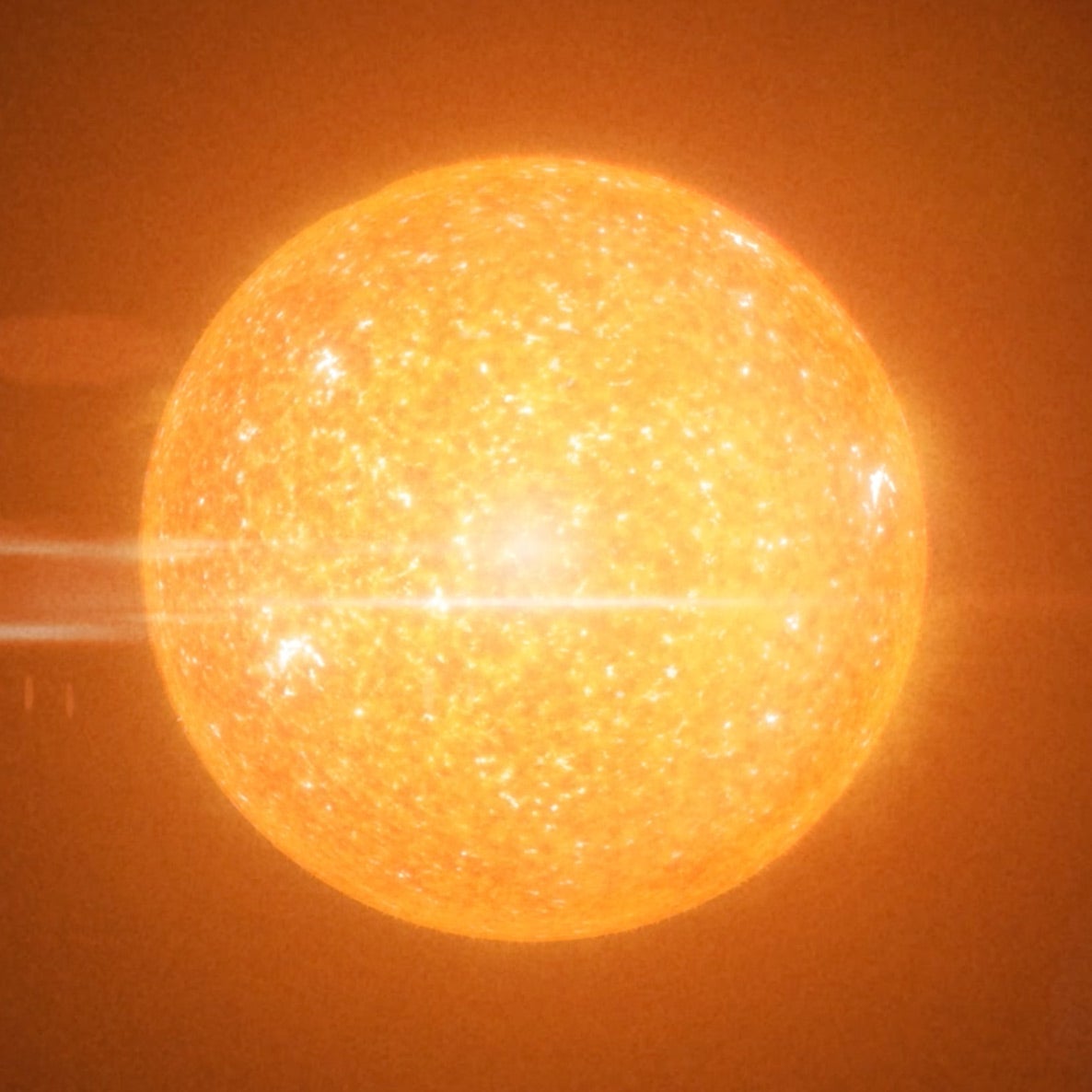
The stars sparkle in the night sky as Earth’s atmosphere warps their incoming light. In truth, starlight appears steady as it speeds through space, only becoming distorted as it travels the last few miles from the top of the atmosphere to our eyes.
But it turns out that’s not quite true: Stars also have an intrinsic “twinkle” born from the movement of the gases that make them up. While the phenomenon is not visible to Earthbound telescopes, researchers at Northwestern University have developed the first 3D simulations of the way energy ripples outward from a massive star’s core. The simulations show how much a star should twinkle as a result and can even convert the ripples into sound waves we can hear.
The study, published July 27 in Nature Astronomy, may bring astrophysicists closer to using telescopes to observe surface effects that reveal the inner workings of stars. “Motions in the cores of stars launch waves like those on the ocean,” said Evan Anders, lead author and astrophysicist at Northwestern University, in a statement. “When the waves arrive at the star’s surface, they make it twinkle in a way that astronomers may be able to observe. For the first time, we have developed computer models which allow us to determine how much a star should twinkle as a result of these waves.”
Hot cores
At their cores, stars thrive on chaos. All stars have a convection zone where gases transport heat outward, like the mechanism that drives thunderstorms. Convection generates turbulence as cooling gas lower in the star is heated and rises, then cools higher up and sinks again. The intense pressure at the star’s core squeezes hydrogen atoms together to form helium atoms, generating the heat that sets off this process. The location of the convection zone depends on the star’s mass — in stars more than 1.2 times as massive as our Sun, convection occurs inside the core. (In the Sun, convection occurs outside the core, near the surface instead.)
This turbulence can in turn generate waves of energy that cause the star to brighten and then dim again, creating a twinkling effect. Because the cores of stars are hidden, Anders and his team created a model that simulates convection inside them. To do so, the scientists looked at the properties of turbulent core convection and the characteristics of the waves it generates. Based on these waves, each simulation then accurately predicts how a star’s luminosity changes.
Bouncing waves
The model showed that when convection creates waves, they bounce around inside the star. Some waves reach the star’s surface, generating a twinkling effect, while others stay trapped inside the star, bouncing around its interior. To understand the twinkling, Anders and his team had to isolate the waves that emerged at the surface.
To do this, the team put a “damping layer” around a model star — “like the padded walls you would have in a recording studio — so we could measure exactly how the core convection makes waves,” Anders said. Once the filter could accurately describe how the star changed waves generated in the core, the team used it to create another filter for how waves should act inside a real star, with some reaching the surface. Using these models, the team could finally show what astrophysicists should expect to see through a telescope as a result.
“Stars get a little brighter or a little dimmer depending on various things happening dynamically inside the star,” Anders said. “The twinkling that these waves cause is extremely subtle, and our eyes are not sensitive enough to see it. But powerful future telescopes may be able to detect it.”
Credit: Northwestern University
The sound of starlight
After successfully modeling the waves, Anders increased their frequencies to make them audible to our ears. Depending on the star’s physical size, the convection-induced waves will sound different. Waves inside a larger star sound like a ray gun; once the waves reach the surface, they change into a low hum echoing through a vacant room. On the surface of a medium-sized star, the waves sound more like a hum across a windy field. And a smaller star’s surface waves sound like a weather siren.
Finally, using their model as an instrument, the team passed the song “Twinkle, Twinkle, Little Star” through various-sized stars to see how each changed the sound of the song. As the stars grew smaller, the sound became higher in pitch. “The stars change the music and, correspondingly, change how the waves would look if we saw them as twinkling on the star’s surface,” Anders said.









